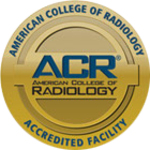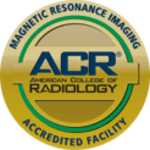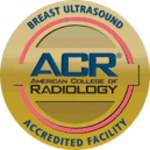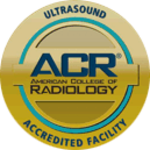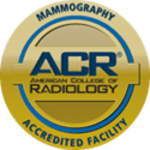Breast Ultrasound
Breast Ultrasound in North Branford, CT are an excellent test to determine if a lump or mammographic abnormality is a solid nodule or a cyst. It is also a good test to identify benign solid nodules such as lymph nodes or fibroadenomas.
We offer 2 types of breast ultrasounds:
- North Branford Diagnostic Breast Ultrasound: focused study to evaluate for a specific clinical symptom (pain, lump) or to evaluate a finding on a different study.
- North Branford Screening Breast Ultrasound: done for heterogeneous or dense breasts, or for patients with a high risk for breast cancer.
If a patient is known to have dense breasts from a previous report, you can order the breast ultrasound and screening mammogram on the same day.
When is Breast Ultrasound Used?
A doctor may schedule a breast ultrasound in North Branford Connecticut after discovering a lump in the breast tissue during a routine physical examination or mammogram. They may also request a breast ultrasound for assessing unusual nipple discharge. A breast ultrasound is most often done to find out if a problem found by a mammogram or physical exam of the breast may be a cyst filled with fluid or a solid tumor. Breast ultrasound is not usually done to screen for breast cancer.
What is Ultrasound?
Ultrasound imaging or sonography, involves exposing part of the body to high-frequency sound waves to produce pictures of the inside of the body. North Branford Ultrasound exams do not use x-rays. Because ultrasound images are captured in real-time, they can show the structure and movement of the body's internal organs, as well as blood flowing through blood vessels. Ultrasound imaging is a noninvasive medical test that helps physicians diagnose and treat medical conditions.
Doppler ultrasound is a special ultrasound technique that evaluates blood flow through a blood vessel, including the body's major arteries and veins in the abdomen, arms, legs and neck.
Ultrasound scanners consist of a console containing a computer and electronics, a video display screen and a transducer that is used to scan the body and blood vessels. The transducer is a small hand-held device that resembles a microphone, attached to the scanner by a cord. The transducer sends out high frequency sound waves into the body and then listens for the returning echoes from the tissues in the body. The principles are similar to sonar used by boats and submarines.
The ultrasound image is immediately visible on a nearby video display screen that looks much like a computer or television monitor. The image is created based on the amplitude (strength), frequency and time it takes for the sound signal to return from the patient to the transducer and the type of body structure the sound travels through.
How does the procedure work?
Ultrasound imaging is based on the same principles involved in the sonar used by bats, ships and fishermen. When a sound wave strikes an object, it bounces back, or echoes. By measuring these echo waves it is possible to determine how far away the object is and its size, shape, and consistency (whether the object is solid, filled with fluid, or both).
In medicine, ultrasound is used to detect changes in appearance of organs, tissues, and vessels or detect abnormal masses, such as tumors.
In a North Branford ultrasound examination, a transducer both sends the sound waves and records the echoing waves. When the transducer is pressed against the skin, it directs small pulses of inaudible, high-frequency sound waves into the body. As the sound waves bounce off of internal organs, fluids and tissues, the sensitive microphone in the transducer records tiny changes in the sound's pitch and direction. These signature waves are instantly measured and displayed by a computer, which in turn creates a real-time picture on the monitor. One or more frames of the moving pictures are typically captured as still images. Doppler ultrasound, a special application of ultrasound, measures the direction and speed of blood cells as they move through vessels. The movement of blood cells causes a change in pitch of the reflected sound waves (called the Doppler effect). A computer collects and processes the sounds and creates graphs or color pictures that represent the flow of blood through the blood vessels.
How is the procedure performed?
For most North Branford ultrasound exams, the patient is positioned lying face-up on an examination table that can be tilted or moved.
A clear water-based gel is applied to the area of the body being studied to help the transducer make secure contact with the body and eliminate air pockets between the transducer and the skin. The sonographer (ultrasound technologist) then presses the transducer firmly against the skin in various locations, sweeping over the area of interest or angling the sound beam from a farther location to better see an area of concern.
Doppler sonography is performed using the same transducer.
When the examination is complete, the patient may be asked to dress and wait while the ultrasound images are reviewed. This ultrasound examination is usually completed within 30 to 60 minutes.
Pelvic ultrasound is used to evaluate the ovaries, uterus, cervix and bladder. It can be ordered following pelvic pain, abdominal bleeding or menstrual concerns. It is used to help diagnose fibroids, cysts, or ovarian or uterine cancers.
How to Prepare for a Pelvic Ultrasound near North Branford , CT
For breast ulrasound exams, there is no needed prep. Wear comfortable clothing around the area to be scanned. You may also be asked to wear a gown. You will be asked to remove your top and bra and a gown will be provided. Also inform your technologist if you have any old images so they may be used for comparison.
What to Expect
Our technologist will take a brief medical history. You will be asked to lie down on the scanning table. The ultrasound North Branford technician (sonographer) will place a clear gel on the area of the body to be imaged. The s onographer or radiologist then presses the transducer against the skin and sweeps it back and forth over the area of interest. The transducer is a small hand-held device that resembles a microphone, attached to an ultrasound machine by a cord. If circumstances dictate, a transvaginal approach may be used.
onographer or radiologist then presses the transducer against the skin and sweeps it back and forth over the area of interest. The transducer is a small hand-held device that resembles a microphone, attached to an ultrasound machine by a cord. If circumstances dictate, a transvaginal approach may be used.
After the exam, the gel is wiped off and you may resume normal activities. Ultrasounds typically take 30 to 60 minutes depending on the exam performed
Your Results
Your doctor(s) will receive a full detailed written report from our highly trained radiologists within one day. Our goal is to provide you with the highest level of customer service and image quality in a caring and supportive environment.
Other Informaiton
Questions?
If you have any questions or concerns about your procedure, feel free to call us at 203-453-5123 or contact us online.




